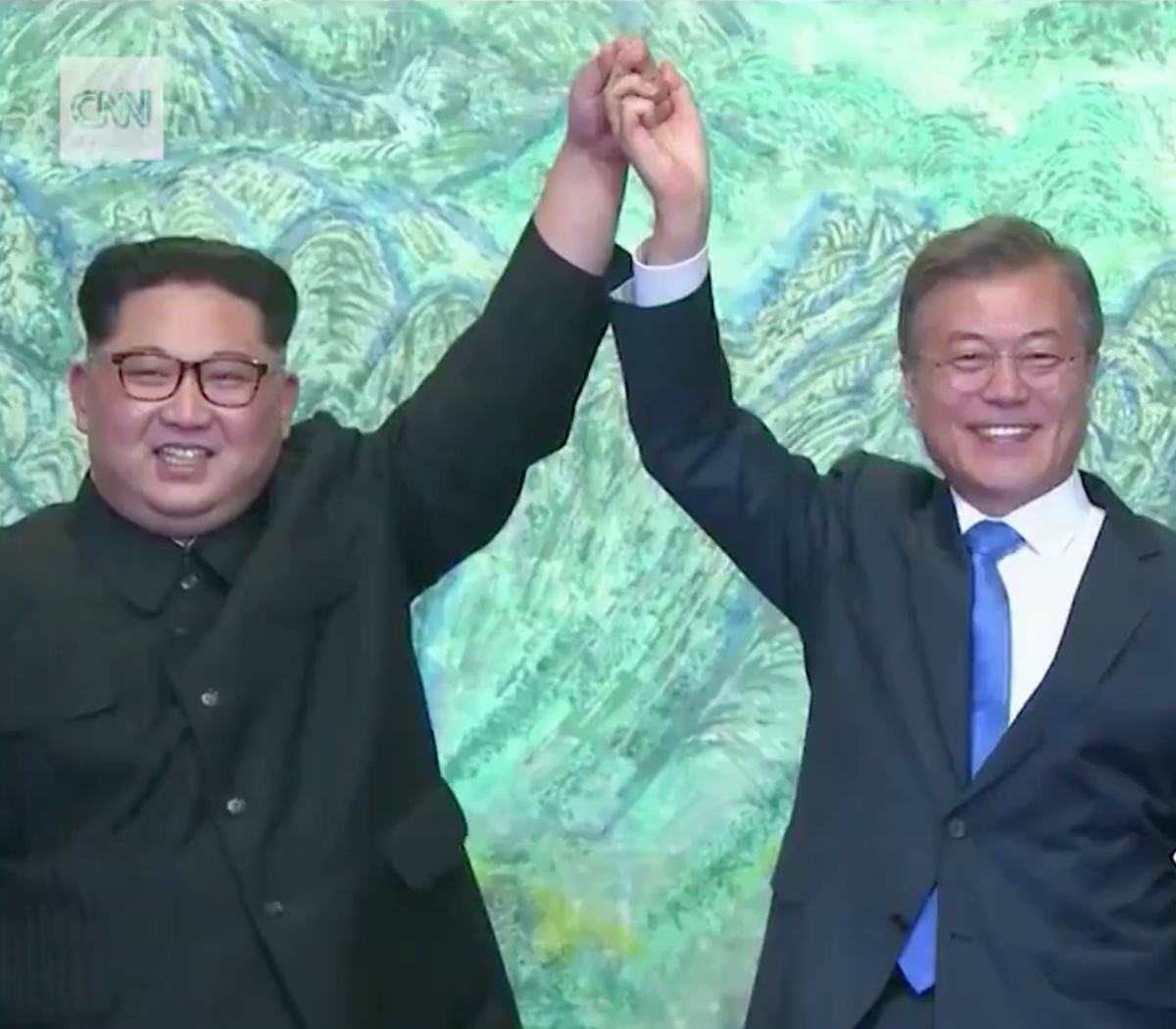
The two leaders of North Korea and South Korea met Friday, April 27. Kim Jong-un, for the north, and Moon Jae-in, for the south, have found themselves for an unprecedented summit at the border between the two countries. Recall that they are technically still at war, and that so far only an armistice was signed at the end of the war at Panmunjeom on July 27, 1953.
For 65 years, a “demilitarized” border – actually the most militarized in the world – separates the two countries, which share the same nation across the Korean peninsula. The latter was occupied by Japan since 1910 when the Second World War began. At the end of this war and after the defeat of Japan, the United States and the USSR shared the peninsula on either side of the 38th parallel.
The war between the north, supported by the USSR and China, and the south, supported by the United States and the UN, took place from June 25, 1950 to July 27, 1953. At the end of this deadly war, the positions between the belligerents were found in almost the same place, the famous 38th parallel. A war for nothing, in short, and millions of displaced and more than 400,000 dead in total.
The Korean peninsula has become over time one of the most militarized and nuclearized areas in the world, with the United States occupying the south and constantly threatening the north ever since, with support from Japan, the United Nations, and the western countries who had participated in the war. Only China and Russia remained allied, diplomatic, from North Korea, and threatened the south. This constant pressure has pushed North Korea to withdraw completely, causing its people an atrocious dictatorship at the same time, and to develop a nuclear strike force, which it seems to have managed to create despite many difficulties.
A potential disaster, and multiple threats on both sides, have finally led to a semblance of relaxation.
This unprecedented, exceptional meeting comes after months, years of diplomatic tension between the various actors in the Korean crisis. The two leaders pledged to work towards the complete denuclearization of the peninsula. To do this, it will be necessary for the United States to agree to remove their nuclear arsenal from the peninsula, which is far from assured.
This return, however, allows us to glimpse the hope that the region will experience peace, finally, after decades.




